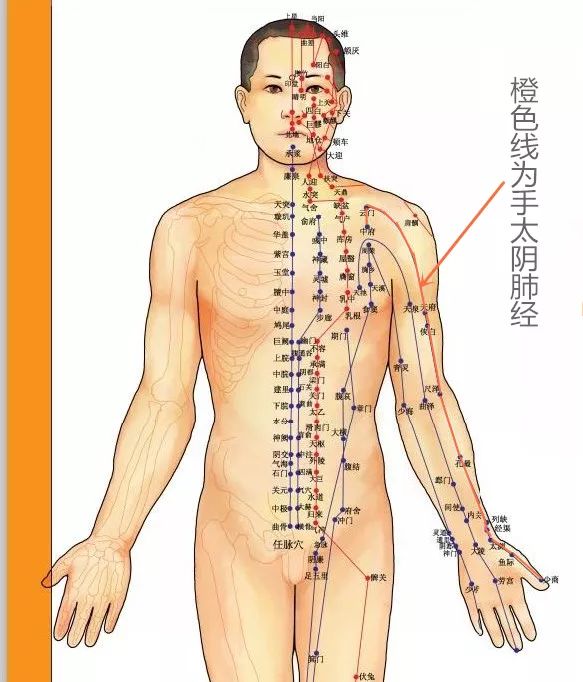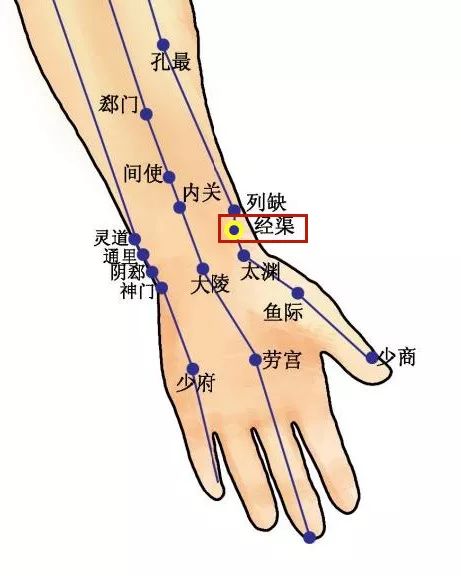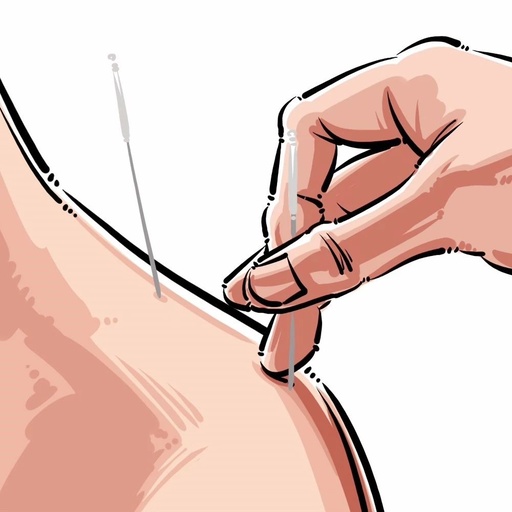Warm Reminder
This section aims to introduce the basic knowledge of acupoints in the human body, providing a fundamental understanding of them and a simple overview of their application in external therapies such as moxibustion, cupping, and guasha. Many acupoints have high risks associated with needling; non-professionals should not attempt needling on their own!
The Hand Taiyin Lung Meridian
🔹 Meridian Pathway
The Hand Taiyin Lung Meridian originates in the middle jiao, belongs to the lung and connects with the large intestine, linking to the stomach and lung systems; it emerges from the lung system, with the external pathway starting from the upper side of the chest, running along the inner edge of the upper limb, passing through the wrist (Cunkou), and terminating at the radial side of the thumb. A branch diverges from the back of the wrist, ending at the radial side of the index finger.

🔹 Overview of Indications
This meridian’s acupoints are indicated for cough, asthma, hemoptysis (kā), sore throat, and other lung-related disorders, as well as other conditions along the meridian pathway.
Acupoint of the Hand Taiyin Lung Meridian
🔹 Jingqu (Jing Point)
[Source] “Huangdi Neijing Ling Shu: Ben Shu”: The lung emerges at Shaoshang… travels through Jingqu, which is located at Cunkou.
[Location] In the depression between the radial styloid process and the radial artery, 1 cun above the wrist transverse crease.
[Needling Method] Extend one hand with the palm facing up, use the other hand to palpate the pulse; the position of the middle finger indicates the point.

[Indications]
1. Cough, asthma, chest pain, sore throat, and other lung-related conditions;
2. Wrist pain.
[Applications]
The Jingqu point has the functions of dispersing lung qi, benefiting the throat, descending counterflow, and relieving cough. It is indicated for cough, throat obstruction, sore throat, bronchitis, asthma, pneumonia, tonsillitis, lower back pain, esophageal spasm, shoulder periarthritis, asthma, chest fullness, chest and back pain, palm heat, and other conditions.
According to the “Jia Yi Jing”, this acupoint “should not be moxibusted, as it harms the spirit”; meaning that moxibustion should not be applied to this point, or it may damage the spirit. The “Zi Sheng Jing” states: “It treats pain in the soles of the feet.” Regularly massaging this acupoint can help disperse lung qi, benefit the throat, and relieve counterflow in asthma. In modern clinical practice, it is often used to treat various respiratory diseases.
Massage Method: Use the pad of the middle finger to press and rub this point for 4-5 minutes each time, which can help open the meridians, relieve cough and asthma, and promote urination.
[Literature]
“Zhen Jiu Jia Yi Jing”: Should not be moxibusted, as it harms the spirit.
“Zhen Jiu Jia Yi Jing”: If there is fullness in the chest, severe cases may cause dizziness and asthma; needle Jingqu and Tianfu. This is called Da Yu.
“Zhen Jiu Zi Sheng Jing”: Treats pain in the soles of the feet.
“Tong Ren Shu Xue Zhen Jiu Tu Jing”: For malaria, chills and fever, chest and back tightness, chest fullness and pain, throat obstruction, palm heat, cough with shortness of breath, and vomiting; needle 2 fen deep.
“Zhen Jiu Da Cheng”: Indicated for malaria, chills and fever, chest and back tightness, chest fullness, throat obstruction, palm heat, cough with shortness of breath, febrile diseases with no sweating, and acute asthma.
*Acupoint images are from the illustrated book “Huangdi Neijing” published by Zitu Publishing.
Cover | Eight Years Old
Editor | Yun Shao

